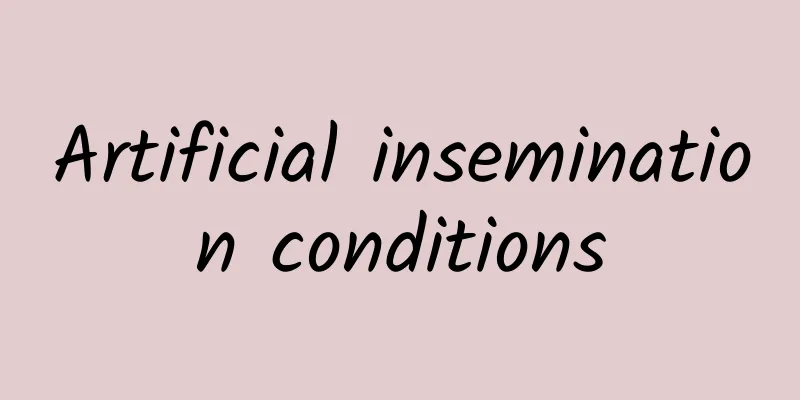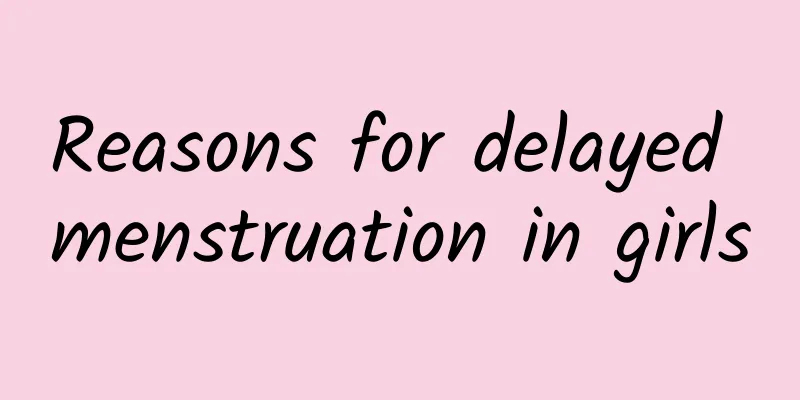Artificial insemination conditions

|
Everyone should have some understanding of artificial insemination. Now there are many people who are undergoing artificial insemination. Especially in today's society, there are already many people suffering from infertility. It is no longer like before when infertility occurs and people don't know what to do. A family will also make an exception. With the technology of artificial insemination, such problems can be solved well. Let's take a look at the conditions for artificial insemination. In clinical practice, many infertile patients have been unable to be cured after long-term treatment and finally have to choose artificial insemination and in vitro fertilization to achieve the purpose of having children. In vitro fertilization and artificial insemination are the choices made by infertile patients when they find that their infertility cannot be cured according to the current medical level after examination, diagnosis and treatment. They belong to the category of difficult and complicated infertility cases. The phenomenon of infertility is very common nowadays. The inability to have children will have a great impact on the entire family. Among the treatment methods, the most advanced one should be artificial insemination, but everyone should know that there are many conditions for artificial insemination. First of all, infertile women who undergo artificial insemination need to undergo a detailed gynecological examination to check whether their internal and external genitalia are normal, whether the endometrial biopsy gland secretions are good, whether the bilateral fallopian tubes are unobstructed, etc. If all these are normal, they are qualified to undergo artificial insemination. Then you need to estimate the day of ovulation to choose the best time for insemination. Commonly used methods for estimating the ovulation date include measuring basal body temperature, cervical mucus (usually appears 4-5 days before ovulation), or continuously measuring the peak level of urinary luteinizing hormone close to the ovulation day, or continuous vaginal ultrasound examinations. Before the woman's estimated ovulation period, the sperm donor or the husband masturbates to extract semen, which needs to be tested. If the results show that the semen density and activity are normal, wait for the semen to liquefy and then use a syringe or catheter to inject the semen into the vagina, around the cervix and into the cervical canal. The woman should rest in bed for 2-3 hours to prevent semen from being discharged. Each woman can undergo artificial insemination three times in a menstrual cycle, starting three days before ovulation. If calculated by hours, it means once 72 hours, 24 hours before ovulation, and 24 hours after ovulation. If conception fails in one menstrual cycle, several cycles can be performed in succession. If necessary, drugs can be used to induce ovulation and adjust the ovulation period to increase the pregnancy rate. The success or failure of artificial insemination is generally determined by 12 cycles. (1) The mother-child blood type is incompatible and a newborn cannot be born alive. (2) The man and/or his family have a serious genetic disease that makes reproduction unsuitable. (3) Azoospermia, severe oligospermia, asthenospermia and teratospermia. Infertility experts point out that there are two types of artificial insemination: artificial insemination between spouses and artificial insemination between non-spouses. If the male has sexual organ abnormalities, such as short penis, hypospadias, impotence, premature ejaculation, etc., or the female has cervical stenosis, unexplained infertility, etc., artificial insemination can be used between spouses. The fallopian tubes must be unobstructed. After the ovary releases the egg, it is first taken into the fallopian tube and meets the sperm in the fallopian tube to become a fertilized egg. The fertilized egg is then transported to the uterine cavity by the fallopian tube in a timely manner. Whether the fallopian tubes are unobstructed can be determined through examinations such as fallopian tube insufflation and fallopian tube iodized oil angiography. There are many conditions for artificial insemination. Not everyone can undergo artificial insemination. Certain conditions must be met. Families with infertility should not be too troubled. If you cannot get pregnant, you can try artificial insemination. Now this method has been greatly improved and can help everyone have a baby earlier. |
<<: Can anemia cause insomnia?
Recommend
The efficacy of stewed pear with pepper
Sichuan peppercorns are a seasoning that is often...
The white half-moon on the nails is getting less and less
Many people have crescent-shaped white marks on t...
Pelvic inflammatory disease treatment device
There are many common types of diseases among wom...
What can't children do during menstruation?
Due to the lack of physiological knowledge, many ...
What are the effects and functions of sour jujube seeds?
Ziziphus jujuba seed is a common plant. It is gre...
What are the dangers of uric acid chin?
The chin will only look good if it is pointed, bu...
Symptoms of Dripping Guanyin poisoning
The weeping angel can be said to be a green plant...
What to do if you accidentally eat loquat kernels
Loquat kernels contain certain toxic ingredients,...
What are the methods of cooking donkey-hide gelatin?
Donkey-hide gelatin has a very high nourishing an...
The amount of menstrual flow is very small after the abortion
Being pregnant is a great thing, but for some peo...
My breath still stinks after brushing my teeth
Many people have many questions about why their b...
Can acupuncture treat cervical spondylosis?
Our country's traditional Chinese medicine te...
What causes abdominal pain during ovulation?
Many women are prone to abdominal pain during ovu...
Why do teeth have holes and smell bad?
Holes in teeth are caused by dirty teeth. When we...
What are the foods that nourish the spleen and stomach? Which foods can nourish the spleen and kidneys?
There is a huge difference between the spleen and...









